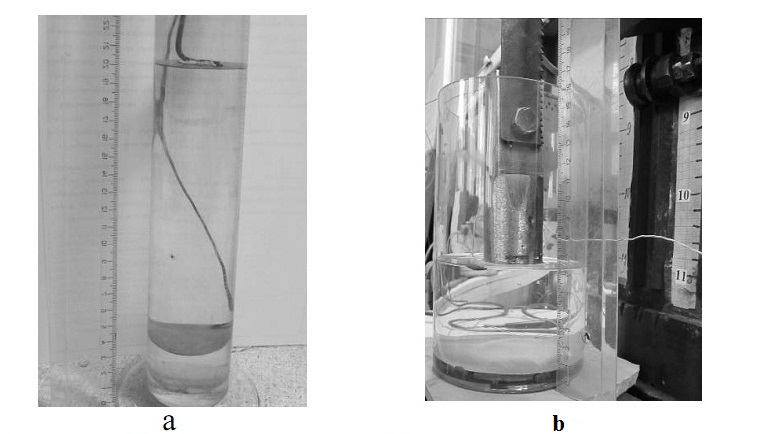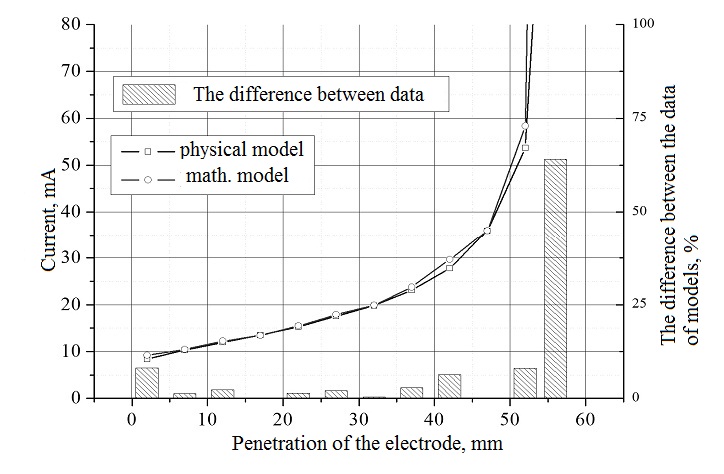Abstract
Introduction
Titanium is becoming increasingly important for various fields of science and technology and expanding range of areas of application. Melting of titanium is only possible means of special electric metallurgy, which means high cost and complicated process. The basic process for smelting titanium is vacuum-arc remelting (VAR), which is expensive and not technologically flexible. This fact necessitates the development of alternative processes. One promising option would be electroslag remelting (ESR) under calcium-fluxes, the so-called chamber electroslag remelting (KESHP).
1. Relevance of the topic
One of the key features is the presence of KESHP along with the heat in the slag bath - an additional source of heat in the form of electrical arcs. The slag has good refining properties. The aim of my work is to compare the processes of heat in the VAR and KESHP processes. You need to determine the distribution of energy between the arc and the energy released in the slag bath and try to explain what happens at the expense of an increase in melting rate by adding Ca in slag bath (even if there is no arc, and the speed is greater).
2. The purpose and objectives of the study, expected outcomes
For this purpose a computer program was written modeling in the slag bath as a set of resistors. Slag bath is divided into cells using a cylindrical coordinate system, where each cell can have its own electrical and thermal parameters. At the same time to simplify the modeling of two-dimensional model in the present form. To do this, make the assumption that the slag bath in the entire volume has an equal and constant electrical conductivity. Current will flow along the path of least resistance, that is, from the end of the electrode to the metal bath. Current supply to the walls of the mold will not be because of the slag scull is an insulator.

Figure 1 - The electrical equivalent circuit of the slag bath
The program allows to calculate the field potentials and the current through the slag bath, depending on the applied voltage given by the geometric parameters of the bath, the resistivity of the slag and the penetration of the electrode. The key parameter is the value of the resistivity of the slag. To test the efficiency of the program decided to measure the voltage and current at different values ??of the electrode penetration on the physical model to further define the specific resistance. Then calculate the same quantities in our program and compare the results.
3. Experiment
Were collected in two models: to determine the resistivity of the water and the physical model slag bath. In the glass containers were recruited distilled water. In the first case, the metal electrode and the bath were two galvanized plate with attached wires, feeders electric current. The first model is a high glass flask, "electrode" is moved vertically and fixed at the desired height to the underside of the plate (h mezheletrodnoe). In the second case: the metal is modeled vannya plate and the electrode - titanium electrode d = 41 mm, placed in a broad d = 98 mm clear glass bowl. Both models are shown in Figure 1. Butt electrode flat modeled, since this form corresponds more to form end if KESHP. In both cases, readings were taken with a multimeter. Calculated on the first model, the resistivity of water were substituted into the mathematical model. With the given input data calculations were carried out in the program dU i dI. It should be noted that the results obtained by the calculation data are in agreement with the measured values. The results are shown in Fig. Two., Which shows the changes in the magnitude of the current penetration of the electrode. The discrepancy between the values ??can be considered insignificant and recognize a workable model. Errors could appear when removing values ??from the models, the values ??fluctuated slightly on the multimeter.

Figure 2 - Plants for the physical modeling
can be seen that the current value of melting, calculated using mathematical model are in good agreement with the results of physical simulation and large deviations are observed only at high burial. Thus, the proposed model can be used to calculating the current melting depending on the parameters of the slag bath. In the future we plan to improve programs to better suit the processes occurring during melting. Also, comparisons and technical parameters of the processes and KESHP VAR, to support the competitiveness of the smelting charge KESHP grades of titanium.

Figure 3 - Simulation results
In writing this essay master's work is not yet complete. Final completion: January 2013. The full text of the and materials on the topic can be obtained from the author or his head after that date.
Source List
- Garmata VA Petrunko A., Galitsky, N., G. Sandler Olesov RA Titan. - Moscow: Metallurgy. In 1983. - 559 p.
- Reznichenko VA Kovneristy Yu, K., N. Kudryavtsev Complex technology of titanates, titanium, new meterialov and semis. - Titanium-2005 in the CIS. By: Naukova Dumka. In 2005.
- Trojan AA, Ryabtsev AD The work of the Donetsk National Technical University (Donetsk National Technical University) in electroslag smelting and refining of titanium. - Titanium-2006 in the CIS. By: Naukova Dumka. In 2006.
- Chervonyi JF, Telin VV Pozhuev VI Ivashchenko, VI, Listopad DA Titanium and its use. - Titanium-2007 in the CIS. By: Naukova Dumka. In 2007.
